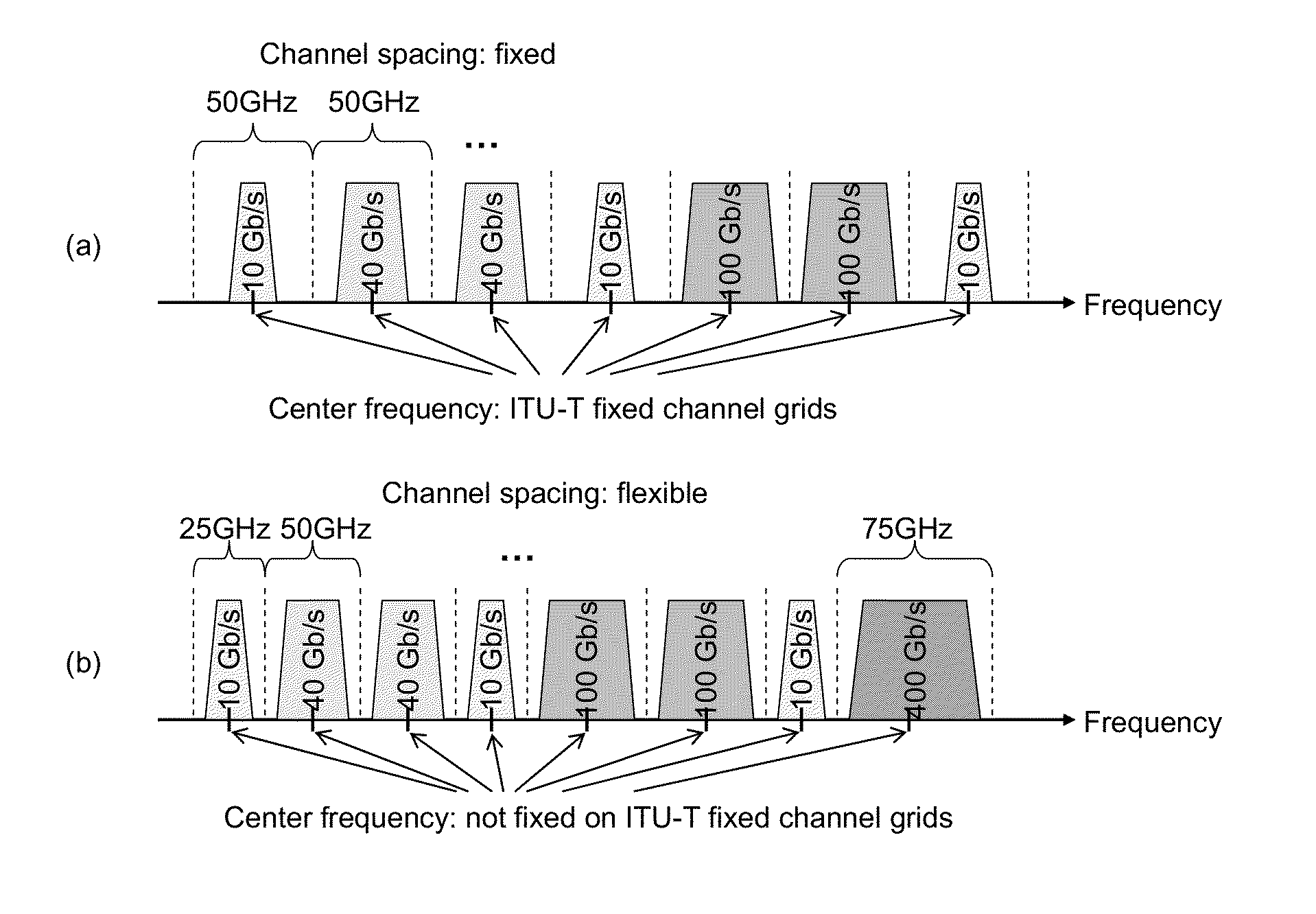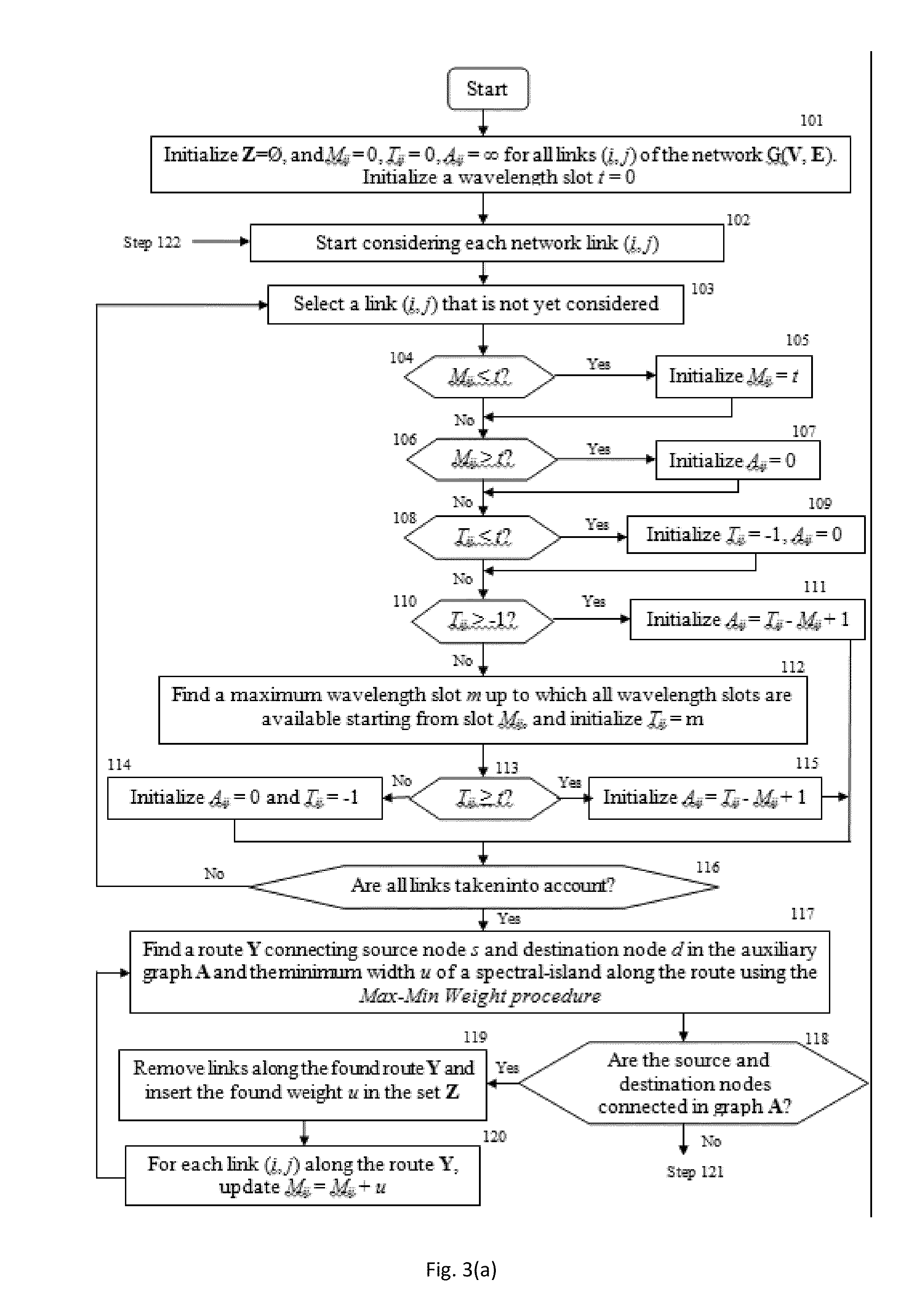Spectrum Aware Rate Selection Procedure for Optical Channels in Flexible WDM Networks
- Summary
- Abstract
- Description
- Claims
- Application Information
AI Technical Summary
Benefits of technology
Problems solved by technology
Method used
Image
Examples
Embodiment Construction
[0021]The present invention is directed to a spectrum-aware rate selection that is recursive in which a solution of the data rate is obtained using the solutions of lower data rates.
[0022]We denote L as the set of line rates offered in an FWDM network, Xl as the required spectrum for a channel with a line rate lεL, r as the data rate of a traffic demand, Un as the total required spectrum for a data rate n, Kn as the optimal set of line rates for channels that support a data rate n, Z as the set widths of spectral-islands along the routes connecting the source node s and the destination node d, P as a line rate that is selected for a channel, Q as a data rate whose solution is used to determine the solution of a data rate n under consideration, Cijt as the spectrum availability profile of a link (i, j), Mij as the maximum wavelength slot starting from the current wavelength slot up to which all wavelength slots are occupied in the spectrum availability profile of a link (i, j), Tu as...
PUM
 Login to View More
Login to View More Abstract
Description
Claims
Application Information
 Login to View More
Login to View More - R&D
- Intellectual Property
- Life Sciences
- Materials
- Tech Scout
- Unparalleled Data Quality
- Higher Quality Content
- 60% Fewer Hallucinations
Browse by: Latest US Patents, China's latest patents, Technical Efficacy Thesaurus, Application Domain, Technology Topic, Popular Technical Reports.
© 2025 PatSnap. All rights reserved.Legal|Privacy policy|Modern Slavery Act Transparency Statement|Sitemap|About US| Contact US: help@patsnap.com



